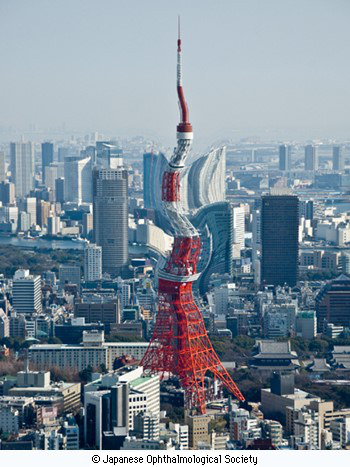Eye Clinic Tokyo has prepared content that will help you to understand of various eye diseases.
This time, it’s about the Aged-related Macular Degeneration (AMD).
■Aged-related Macular Degeneration (AMD)
【Cause】
Age-related macular degeneration (AMD) is an eye disease that can blur your central vision. It happens when aging causes damage to the macula — the part of the eye that controls sharp, straight-ahead vision. The macula is a part of the retina and plays an important role in the clarity of vision and the processing of detailed visual information.
Age-related macular degeneration is the leading cause of blindness in Europe and America, but until now it was said to be relatively rare in Japan. However, due to the aging of the population and the Westernization of lifestyles, it has increased significantly in recent years, making it the fourth leading cause of blindness. About 1% of people over 50 years old and the older people are, the more likely they are to get the disease.
It is said that the disease is related to many factors such as genetic factors and environmental factors, and the main factors include age, smoking, hypertension, high cholesterol, obesity, eating habits and so on.
There are 2 types of AMD: dry and wet.
◎Wet AMD
Wet AMD (also called advanced neovascular AMD) is a less common type of late AMD that usually causes faster vision loss. It happens when abnormal blood vessels grow in the back of the eye and damage the macula. These new blood vessels are fragile, causing blood components to leak or the blood vessels to rupture. When blood components leak, the retina swells, and fluid accumulates under the retina, causing vision loss.
◎Dry AMD (also called atrophic AMD)
This is when the macula gets thinner with age, causing damage to the retina and gradual loss of vision.
The wet type and dry type are equally common in Westerners, but the dry type is rare in Japan.
【Symptoms】
The symptoms of AMD depend on the stage. The main symptoms include straight lines starting to look wavy or crooked. You may also notice a blurry area near the center of your vision. However, in the early stages, there may be almost no symptoms, and symptoms may not appear until the disease has progressed.
To check your subjective symptoms, there is a self-check sheet called the “Amsler chart” that we introduced in the previous epiretinal membrane edition. (Please check the epiretinal membrane edition for details)


【Treatment】
AMD is a progressive disease. Treatment for AMD depends on the stage and type. There’s currently no treatment for early AMD, so your eye doctor will probably just keep track of how your eyes are doing with regular eye exams. Eating healthy, getting regular exercise, and quitting smoking can also help.
The treatment for wet AMD is using Anti-VEGF medicine blocks VEGF (vascular endothelial growth factor), slowing the growth of blood vessels in the eye. This slows or stops damage from the abnormal blood vessels and slows down vision loss. Sometimes it can even improve vision. During the first treatment, the medicine was given once a month for 3 months continuously. After that, the administration time was determined according to the drug type and condition. Usually, if the drug doesn’t work, the disease will appear again, so it is basically necessary to continue treatment.
Another treatment for wet AMD is photodynamic therapy. Your eye doctor injects a medicine called verteporfin (Visudyne) into a vein in your arm. It collects in the abnormal blood vessels under your macula. Then the eye doctor shines a laser into your eye. The light from the laser activates the medicine. The medicine then creates blood clots in your abnormal blood vessels.
Right now, there is no way to treat the dry form of AMD.
【Summary】
Once age-related macular degeneration develops, it cannot be completely cured, and as it is a progressive disease, it is difficult to completely stop the progression even after treatment, so regular eye check-up and management are important. With early detection and appropriate treatment, it may be possible to maintain or improve vision. Regular eye check-up and visual examinations are useful for early age-related macular degeneration.


